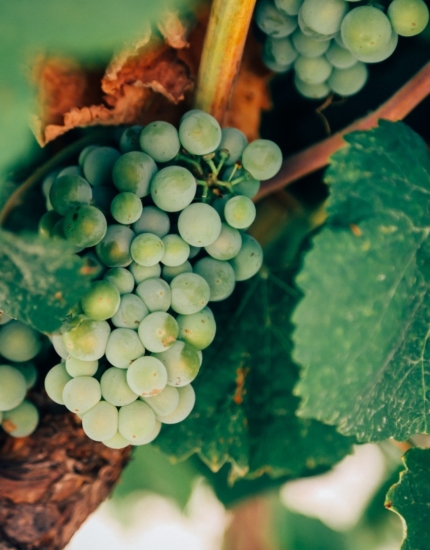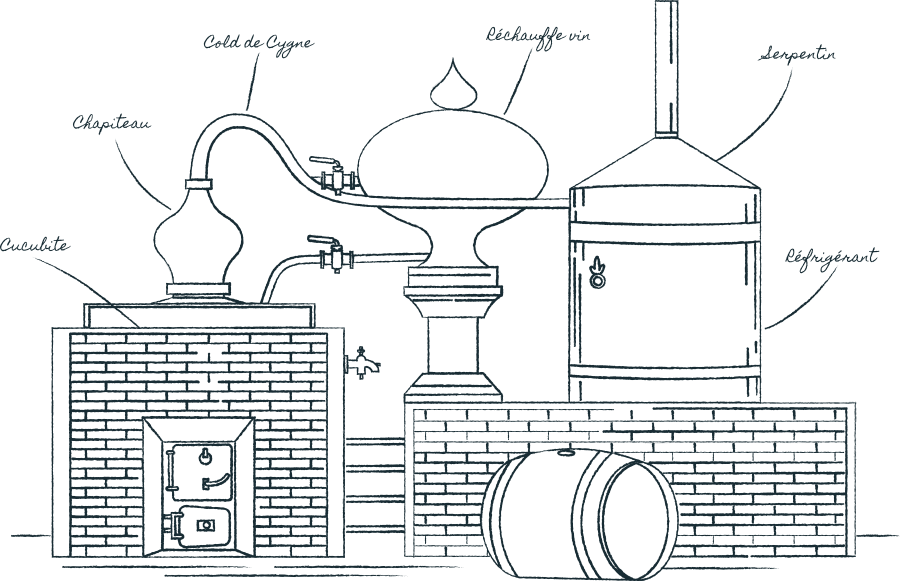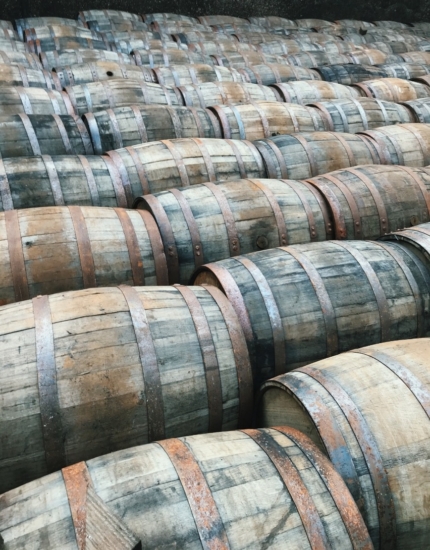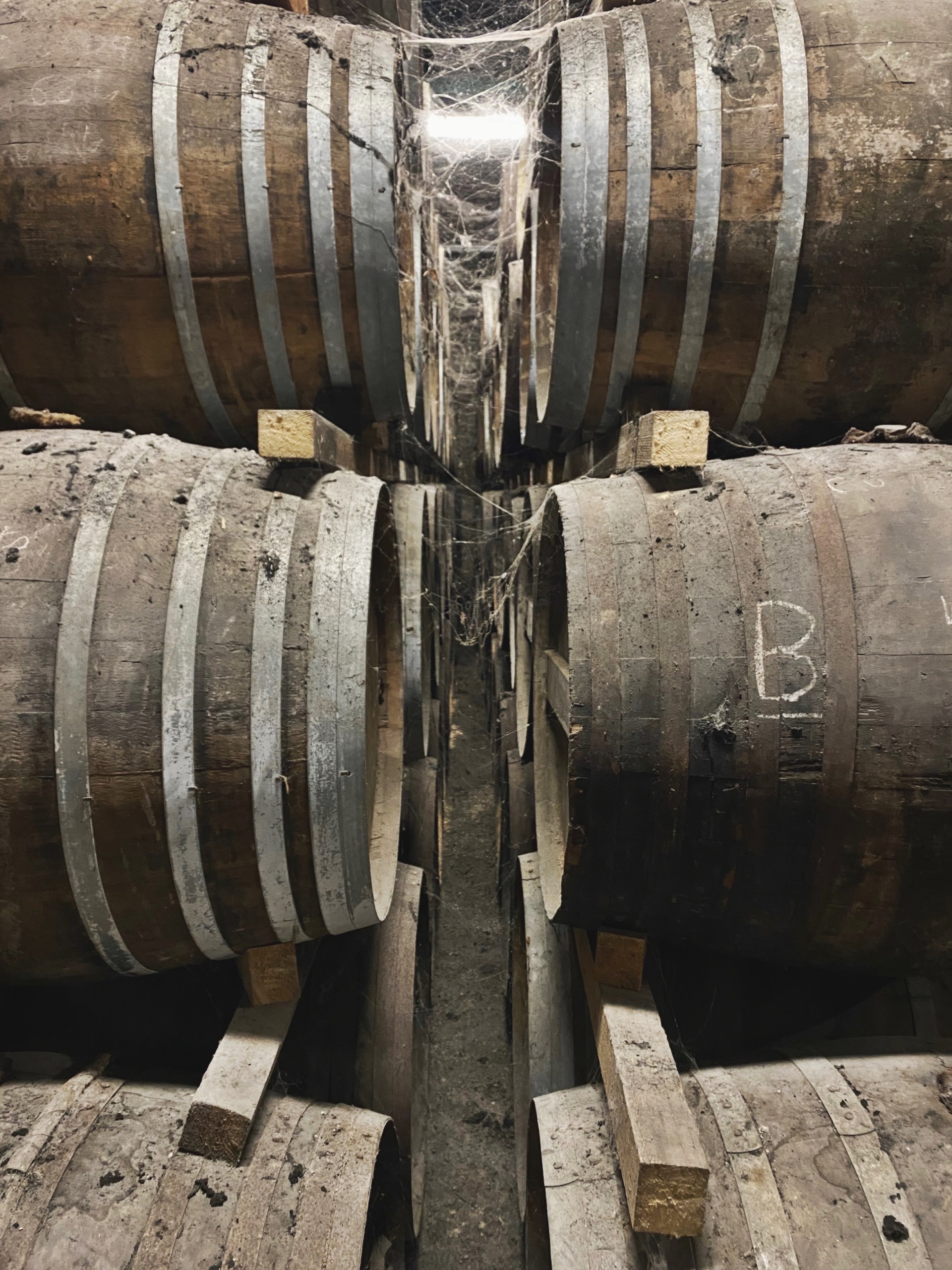
Our expertise

Harvesting and vinification
It all starts with the grape varieties (Ugni blanc is the main one), selected to produce the white wines destined exclusively for Cognac production. This is followed by the traditional harvesting, pressing the grapes, and making the wine…
Mid-October : The Harvest
Pressing and Fermentation : The Natural Method
The grapes are pressed immediately after harvesting in traditional basket plate presses or pneumatic bladder presses. The use of continuous presses is forbidden. Fermentation of the juice follows immediately. Chaptalization (the addition of sugar) is forbidden by law. Pressing and fermentation are closely supervised, as they have a determining influence on the final quality of the eau-de-vie.
About 5 to 7 days after the beginning of fermentation, the wines for Cognac contain about 9% alcohol.
With their high acidity and low alcohol content, they are perfect for distillation, which must be completed by the next March 31st.
Distillation
Once alcoholic fermentation is completed, the white wine has to be distilled to make the eau-de-vie. The distillation method has not changed since the birth of Cognac. The special Charentais copper stills “à repasse” that were used then are still in use today. Cognac distillation is performed in a two-stage process:
A Perfect Still
Distillation is carried out in two “chauffes”, that is, in two separate heatings, using a special Charentais copper still. It is made of a uniquely shaped boiler heated on a naked flame topped by a still-head in the shape of a turban, an olive, or an onion, and prolonged by a swan-neck tube that turns into a coil and passes through a cooling tank referred to as “the pipe”.


Cooperage
Cognac is kept and aged for many years in oak casks. The making of a Cognac cask follows a traditional and ancestral method that is near perfection. Nothing is left to chance from the selection of the oak to the assembly of the casks, in order for Cognac to acquire the best of the oak for many years.

Selecting the Wood
Cognac ages exclusively in oak casks traditionally from the Tronçais and Limousin forests – Quersus pedunculata and Quersus sessiliflora, respectively – depending on the producer and style. These two varieties of oak were selected because of their hardness, porosity and extractive characteristics.
The Tronçais forest, in Allier, provides softer, finely grained wood, which is particularly porous to alcohol. The Limousin forest produces medium grained wood, harder and even more porous. The tanins in Tronçais oak are famous for their softness, whereas those in Limousin oak are known for the power and balance they communicate to Cognac.
An eau-de-vie will extract more tannins when it is aged in casks made with Limousin oak.